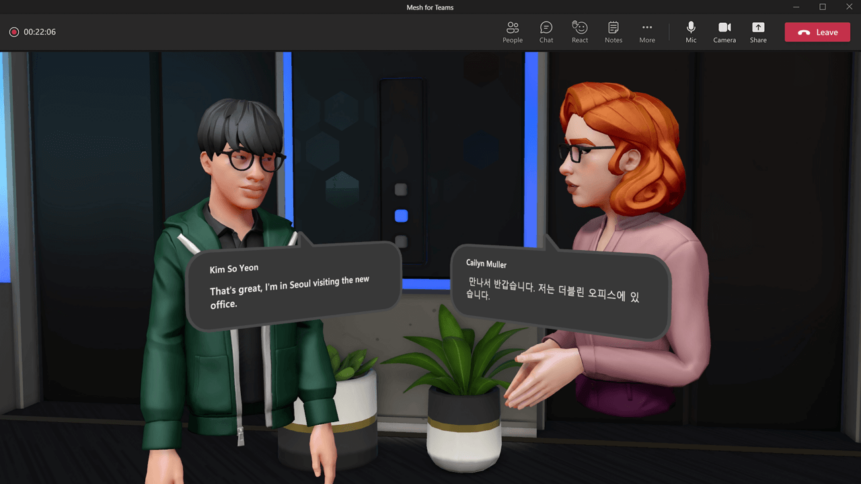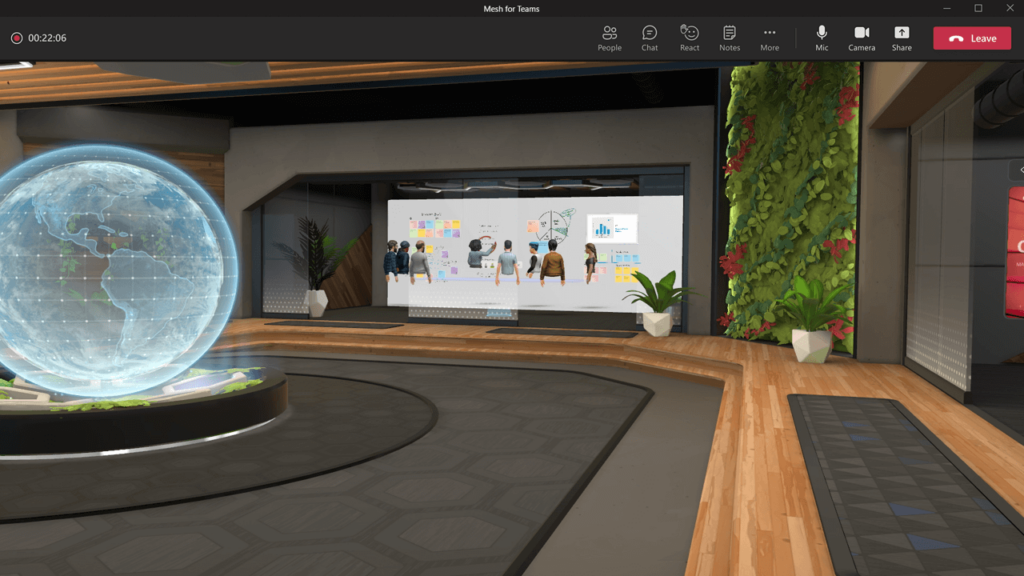Mesh for Teams is Microsoft’s stake in the burgeoning metaverse

When Mark Zuckerberg’s Meta was announced, Microsoft was among the tech supremos next in line to unveil Mesh for Teams, which is their version of the “metaverse”. Both concepts rely on the use of virtual reality goggles and augmented reality technology, with Mesh for Teams seemingly offering something similar, yet different, to Meta’s metaverse.
Microsoft initially announced Mesh for Teams earlier this year. The company has been developing the technology over the last several months and is now ready to unveil it, just in time as Meta made their announcement last week.
As the world slowly comes bounces back from the pandemic, tech companies seem to be interested in creating tools that will supposedly enhance remote working experiences. Indeed, the pandemic has shown that remote workers are oftentimes as productive, or even more so than working solely in the office.
Yet the big concern on remote work is the mental health effects it has been having on employees. As such, tech companies are looking at innovations to improve and invigorate both remote or even hybrid work experiences. The metaverse announcement by Mark Zuckerberg appears to be just the beginning of what the world of mixed augmented reality will be like.
Thus it is not that surprising that Microsoft unveiled its solution to the duelling problems associated with remote and hybrid work conditions. Available in 2022, Mesh for Teams will combine the mixed-reality capabilities of Microsoft Mesh, which allows people in different physical locations to join collaborative and shared holographic experiences, with the productivity tools of Microsoft Teams — where people can join virtual meetings, send chats, collaborate on shared documents, and more.
According to Jeff Teper, a Microsoft corporate vice president whose responsibilities include the Microsoft 365 productivity tools Teams, SharePoint, and OneDrive, Mesh builds on existing Teams features such as Together mode and Presenter view that make remote and hybrid meetings more collaborative and immersive.
These tools are all ways “to signal we’re in the same virtual space, we’re one team, we’re one group, and help take the formality down a peg and the engagement up a peg,” Teper told TechHQ. “We’ve seen that those tools have accomplished both goals of helping a team be more effective and also helping individuals be more engaged.”
Anyone will be able to access Mesh for Teams from standard smartphones and laptops to mixed-reality headsets. It is designed to make online meetings more personal, engaging, and fun. It’s also a gateway to the metaverse – a persistent digital world that is inhabited by digital twins of people, places, and things.
“Think of the metaverse as a new version – or a new vision – of the internet, one where people gather to communicate, collaborate and share with a personal virtual presence on any device. Organizations can also build immersive spaces – metaverses – within Teams. Mesh for Teams users can take their avatars into these spaces to mix and mingle, collaborate on projects and experience those serendipitous encounters that spark innovation,” said John Roach, executive architect, Digital Transformation Services at Microsoft.

(Source – Microsoft)
Mesh for Teams to roll out in 2022
When Mesh for Teams begins to roll out its preview in the first half of 2022, users will have a variety of options to choose from, to create and join a Teams meeting as a unique, personalized avatar. Other attendees might also be represented by avatars, show themselves on video, or use a static picture or bubble with initials.
“To start, we will take audio cues so as you talk your face will animate. You’ll also have animations that bring additional expressivity to the avatars. Your hands will move. There will be a feeling of presence even though it’s as simple as being able to take your audio and manifest that as facial expressions. That’s the first release,” said Katie Kelly, a principal project manager at Microsoft working on Mesh for Teams.
She added that there will be animations that bring additional expressivity to the avatars, including making hands move. “The ambition is to closely follow that with Microsoft’s plethora of AI technologies so that we can use the camera to insinuate where your mouth is and mimic your head and facial movements,” Kelly added.
Eventually, the Microsoft metaverse experience is expected to evolve with sensor technologies improving over devices. In fact, reports show that Meta has already been working on a new type of skin to give a more realistic experience for Meta users. Together with Carnegie Mellon University scientists, artificial intelligence researchers at Meta created a deformable plastic “skin” less than 3mm thick.
With Microsoft and Meta making big announcements back to back on the fast-becoming-buzzword-y metaverse, the reality is the question: will users be really interested to adopt this whole concept to such an outsized extent? Sure, augmented reality and avatars sound interesting. But if most of us have already been living at home due to the pandemic for almost two years, would we still want to remain at home and use these interactive tools — or would we prefer to go out and experience the real world in real-time?
One thing to take note of is, if the experience provided in the metaverse is really so close as the real world, this may just be the beginning of a whole new era. For enterprises, it may be challenging to adapt to these changes at first — but if they could deal with remote working, these new experiences may just be the future of the work. It will also be interesting to see how, further down the digital road, Microsoft and Meta will collaborate to integrate both their toolkits in the same metaverse in the future.










